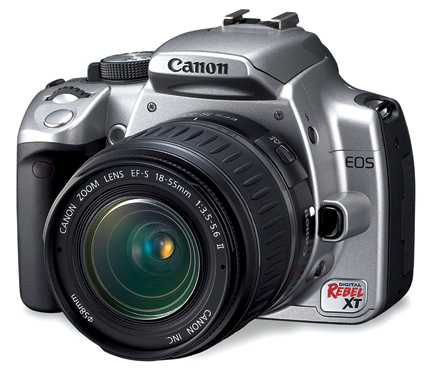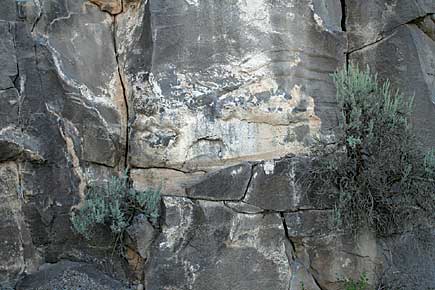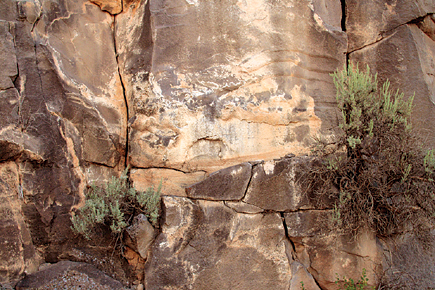Canon’s EOS Digital Rebel XT; 8-Megapixel CMOS Sensor And Options Galore
The compact digital SLR category has seen quite a few entrants of late, all vying for the hearts and minds, and dollars, of those moving up from point-and-shoot digicams or from their film SLR cousins. While those already in possession of compatible glass from their film SLR cameras are usually swayed one way or the other in their purchase, there are those who have no investment in compatible lenses and accessories that are faced with a wide variety of choices.
 |
One of the more successful entrants of late is the Canon EOS Digital Rebel XT, a.k.a. the EOS 350D. This APS-C size sensor digital SLR, with a 1.6 lens conversion factor, sports an effective 8-megapixel CMOS sensor. The image formats are JPEG and raw, with raw being a 12-bit file. Generally priced at around $1000 with kit lens, the XT is light in weight (at 17 oz without lens) and fairly small (5x3.7x2.5"), at least when compared with the premium, pro-oriented models. It is compact enough to vie for attention when placed next to 12x zoom digicams, especially if you consider lens interchangeability as one criterion when considering purchase.
The XT has everything you might expect from a digital SLR, and many of the features found on the higher-end models are present here, albeit with some limitations such as lower burst rate and framing speed, less custom functions and focusing zones, and less raw+ options, although you can do a raw+Large JPEG recording. A raw+smaller JPEG would have been appreciated as well. But there are also some surprising features given the obvious avid amateur orientation of the XT, including the ability to shoot in sRGB or Adobe RGB, the sophistication of color temperature correction, the 95 percent viewfinder coverage, and the numerous image-processing options that can be controlled by the user. Given those levels of control it's difficult to pigeonhole the camera as strictly an amateur instrument, although the design, plasticky build, built-in flash, and presence of scene modes would seem to be a dead giveaway. These functions do not ban the camera from consideration by advanced users who might want a second body for casual work or when taking a pro model into the field might be foolhardy.
 |
|
|
The issues for me with any digital SLR are handling and, of course, image quality,
and while I did not put this up against pro cameras in those categories, there
should be no great sacrifice on any of those fronts. One of the main aspects
for exploration is the 8-megapixel sensor and how it performs, given the way
pixels are packed on the APS-C size. Much has been made on the digicam front
regarding this issue, particularly when sensors are pushed at higher ISO settings
and the resultant noise this creates. The "native" ISO of the XT
sensor is ISO 100, with options to go up four stops to ISO 1600.
One of the keys to this and all other digital cameras is the power of the processor,
in this case Canon's DIGIC II. In the past one of the differentiators
between Canon pro and amateur models has been the degree of sharpening in the
image processor, with pro models getting scant sharpening and amateur models
getting much more. This has changed of late, but the XT processor does more
processing in this regard. I did find, however, that while not unsharp images
from the XT benefited from some sharpening, although you could say this about
all the digital SLRs available today.
 |
We conducted many of our tests on the XT with the new Sigma 30mm f/1.4 EX
DC HSM lens, a "digitally dedicated," fast lens that offers two
SLD (Special Low Dispersion) glass elements plus a hybrid aspherical lens. Offering
a close focusing distance of 15.7" and an f/16 minimum aperture, the lens
is surprisingly compact for its speed. Being digitally dedicated means the lens
can only be used on digital SLRs with an APS-C size sensor. I usually pack a
fixed focus fast 50mm lens with all my digital SLRs, but the Sigma gave me a
50mm angle of coverage and I didn't have to work at 80mm equivalent coverage
that would result from using the film-based 50mm.
































